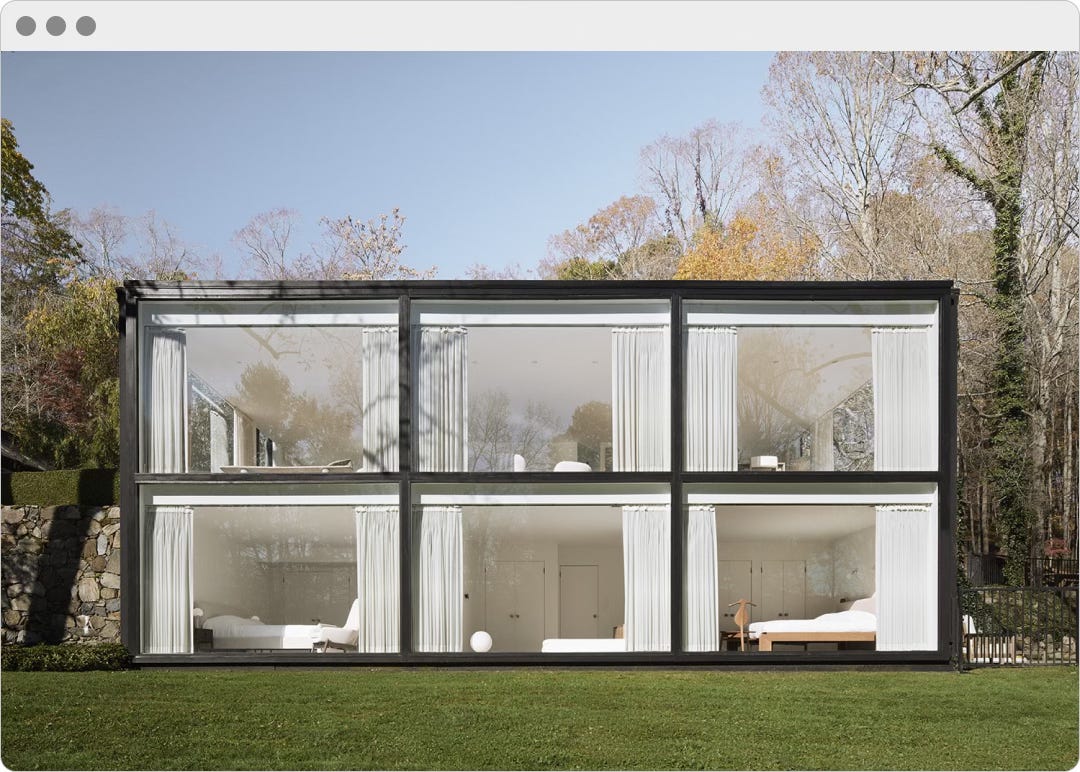008: The soul in sparse and what remains
Navigating between sterile and characterful minimalism
There was a time in my life when I mistook emptiness for peace.
I had just moved into a new apartment, a high-rise cube of glass and brushed concrete, white walls as pure as an untouched canvas overlooking the serene Puget Sound. The kind of space that seemed to echo the pages of Cereal magazine or a Scandinavian design blog. Everything was curated—or so I thought: a single vintage Milo Baughman chair, a matte teal kettle, linen sheets, and an unforgiving rejection of clutter. I was at the very beginning of my minimalism journey. In those early days, I fell hard for that polished emptiness. Gosh, it looked so… final.
I remember standing in the center of the room one evening, gazing out over the city, and feeling nothing.
It was supposed to be minimalism. But it felt more like absence. Like living in a showroom built for no one in particular. Like walking into a gallery you’re not sure you belong in.
That’s when I began to see the distinction. There is a kind of minimalism that strips away the noise of modern life in order to uncover the essential, and there is a kind that strips away life itself. One is spare. The other is sterile. And the difference, subtle though it may seem in photographs or Pinterest boards, is everything.
This essay is not a manual. It’s not a set of rules or a minimalism manifesto. What follows is a personal reflection, born not from doctrine but from experience. Over the years, I’ve found myself both drawn to and unsettled by minimalist spaces—spaces that were curated sanctuaries of calm we often associate with clarity, purity, even virtue. But I began to notice something beneath the surface: a difference between emptiness and openness, between cold control and quiet presence. This essay is an attempt to explore that tension. It is subjective, emotional, and unfinished, like all honest things. I offer it not as advice, but as a story—my own journey in learning to distinguish between a minimalism that erases and one that reveals.
The lure of the sterile
The way I define sterile minimalism, in its most distilled form, is about control. It’s born from the desire to conquer chaos, to arrange life into a neat diagram of intentions. It seduces with its promise of clarity and simplicity, especially in a culture bloated by overstimulation and choice fatigue.
But it often mistakes erasure for essence.
It’s the empty white living room with no books on the shelves, no art on the walls, no scent lingering in the air. The space where nothing distracts because nothing is allowed. It can be beautiful, of course. The purity of form, geometry, the restrained palette—there’s a seductive power in its monastic appeal. But too often, sterile minimalism becomes a vacuum. It says: you can be at peace here, but only if you leave yourself at the door.
I understand the appeal. I fell for it myself.
There’s something oddly satisfying about paring down your possessions to a suitcase and a shelf, donating the sentimental, deleting the digital, vacuum-sealing the textures of your life. It gives the illusion of transformation, like change can happen from the outside in. But real transformation requires presence, not just absence. And sterile minimalism often confuses the two.
And for the record, I still catch myself browsing those pristine Scandinavian interiors online. For a moment, I want that emptiness again. It’s hard not to. But I’ve moved on.


